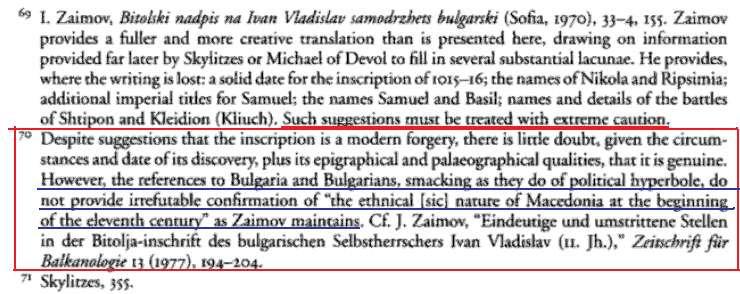Politically and ecclesiastically, the new empire was the direct descendant of the empire of Symeon and Peter, and was regarded by Samuel and the Byzantines alike as being simply the Bulgarian Empire. For apart from Byzantium, only Bulgaria at that time possessed a tradition of empire with a patriarchate of its own. Samuel was entirely committed to these traditions.
The Tsar of the Bulgarians, Peter, was opposed by his brother Ivan together with other Bulgarian noblemen. But Ivan was caught, whipped and thrown into jail and all the others were subjected to the heaviest punish*ments.....Mihail, the other brother of Peter, also dreamed of seizing power in Bulgaria....He soon died, however, and his adherents, because they were afraid of Peter's wrath, entered the Byzantine lands by way of Macedonia, Strymon and Hellas.....Peter, Tsar of the Bulgarians, renewed the peace immediately after his wife's death and concluded a treaty with the Emperors and gave as hostages his own sons Boris and Roman. Not long afterwards, he died. After this his sons were sent to Bulgaria to occupy their father's Kingdom and to stop the advance of the Kometopouli. Because David, Moses, Aaron and Samuel, sons of one of the powerful comites of Bulgaria, were planning an uprising and were spreading unrest throughout the Bulgarian State.....
And the town of Skopje was surrendered to the Emperor by Roman, the son of Peter, Tsar of the Bulgarians, and brother of Boris, called also Simeon after his grandfather and placed there as governor by Samuel. The Emperor received him and after honouring him for his decision with the title of patrician and prepositor, sent him as a strategus to Abydos.
Of the four brothers, David was immediately killed by some Wallachian vagabonds between Kostur, Prespa and the so-called “Fair Oak Wood.” While besieging Ser, Moses was hit by a stone cast from the wall and died. Aaron was killed by his brother Samuel on July 142 (986) in the place called Razmetanitsa, together with all his kin, because he was a supporter, so they say, of the Romans, or because he was trying to seize power for himself. Only his son Vladislav Ivan was saved by Samuel's son Radomir Roman.


























Leave a comment: